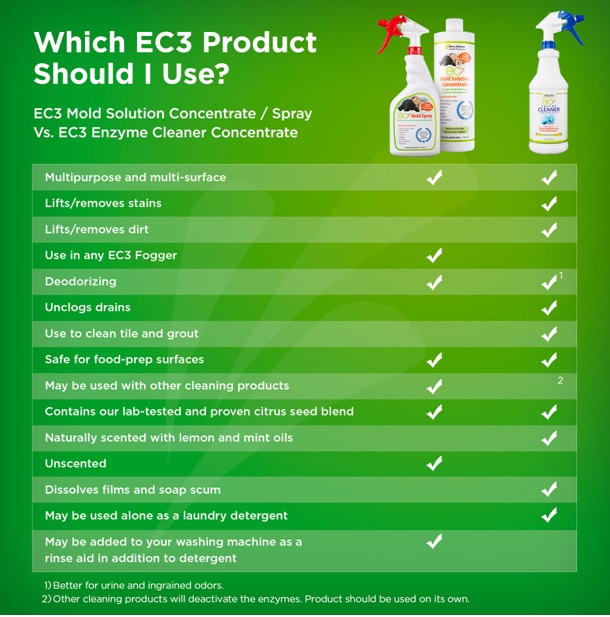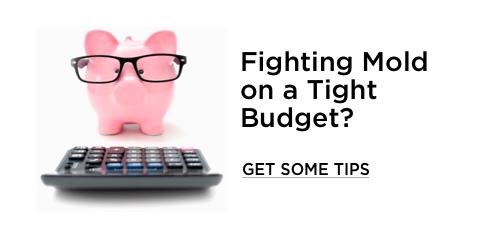What to Do After You've Been Exposed to Mold
Sep 13th 2024
Exposure to mold can be extremely alarming, especially when you realize just how quickly it can affect your health and home.
Whether you’ve noticed mold in your home or workplace, or you’ve experienced the musty odor of mold somewhere you frequent, it’s essential to act fast. Mold exposure can sometimes lead to serious issues, causing respiratory problems, allergic reactions, and other symptoms that are far from pleasant.
If you’ve recently been exposed to mold, don’t panic! Here’s a guide on what to do and how to take care of yourself after mold exposure:
Recognizing the Symptoms of Mold Exposure
Before taking any action, it’s critical to first recognize the symptoms that may arise after exposure to mold. Everyone reacts to mold differently, depending on their sensitivity, the amount of exposure, and the type of mold. Some of the most common symptoms include:
- Sneezing, runny nose, or nasal congestion
- Coughing or wheezing
- Red or itchy eyes
- Skin rashes
- Shortness of breath or difficulty breathing
In more severe cases, long-term exposure to mold may lead to more serious health problems such as asthma attacks, sinus infections, fatigue, and more. It’s essential to act quickly if you or a member of your family experience any of these symptoms.
Remove Yourself from the Moldy Environment
The first step after mold exposure is simple: remove yourself from the affected area. Mold spores spread easily through the air, and the longer you stay in the environment, the higher your chances of inhaling more of them.
If mold is growing in your home or workplace, try to spend time in areas that are free of contamination. If it’s a more serious situation, you might want to consider staying with friends or family while the mold issue is resolved. Limiting your exposure is key to preventing further health problems.
Clean Your Living Space
Mold thrives in places that are dark or damp. Eliminating the moisture that causes it to grow is absolutely essential. Here’s what you can do:
- Identify the source of moisture - Whether it’s a leaky pipe, poor ventilation, or high humidity, find out where the excess moisture is coming from and fix it.
- Wear protective gear - When cleaning up mold, use a mask, gloves, and goggles to avoid inhaling spores or getting mold on your skin.
- Use products specifically designed to tackle mold - Regular household cleaning products might not be enough to get rid of mold. Instead, opt for specialized products, like our EC3 Mold Solution Spray or EC3 Enzyme Cleaner Concentrate here at Micro Balance Health Products. See the table below for a comparison between the two products.

- Ventilate the space - Open windows and doors to allow fresh air to circulate. Using a fan can also help reduce moisture in the air.
- Discard moldy materials - Some items might be too far gone to salvage. If that’s the case, it’s best to throw them away to prevent further contamination.
If the mold problem is extensive, it’s always a good idea to hire a professional mold remediation service to ensure that the job is done properly.
Take Care of Your Health with Mold Detox Supplements
Mold exposure can affect your body in unexpected ways, especially if you've been dealing with mold for an extended period. Aside from addressing the external environment, it's equally important to support your body's natural detox processes. One effective way to do this is by using mold detox supplements, which we also offer here at Micro Balance Health Products.
What Are Mold Detox Supplements?
Mold detox supplements are specially formulated to help your body eliminate mold toxins (also known as mycotoxins). Ours contain ingredients that support liver function, boost your immune system, and promote overall detoxification.
How to Use Mold Detox Supplements
Mold detox supplements can only take you so far; it’s critical to remove mold from the air that you breathe first. That’s why we recommend taking our mold detox supplements only after you’ve addressed your environmental mold issue.
If you suspect or know you've been exposed to mold, adding mold detox supplements to your routine can help speed up your recovery. Always follow the recommended dosage on the packaging, and consider consulting a healthcare professional before starting a new supplement, especially if you have pre-existing conditions or are taking medication.
In addition to supplements, drinking plenty of water, eating a nutrient-dense diet, getting adequate daily movement, and getting enough sleep are essential steps to support your body’s natural detox processes.
When to See a Doctor
Mild symptoms from mold exposure can go away after you’ve removed yourself from the moldy environment and taken steps to detox. However, there are certain cases in which you should seek medical attention.
It’s time to see a healthcare professional if you experience any of the following symptoms:
- Difficulty breathing or tightness in your chest
- Persistent coughing or wheezing that doesn’t improve
- Severe allergic reactions
- Chronic fatigue or brain fog
- Recurring infections
A mold-literate doctor can help diagnose mold-related health issues and may recommend additional treatments, such as prescription medications, home oxygen therapy, or others to reduce inflammation.
Mold exposure can be unsettling, but by taking quick action, you can minimize its impact on your health and home. With the right knowledge and tools, mold doesn’t stand a chance!



